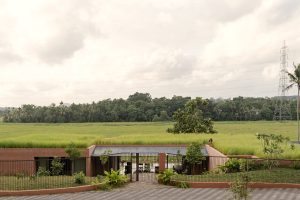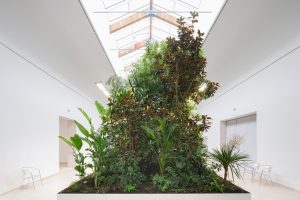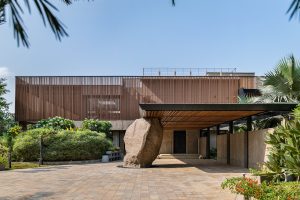Amerigo Vespucci Airport In Florence Gets An Exquisite Vineyard, Raising The Bar For Airport Sustainability Design
- 21 Feb '24
- 6:26 pm by Vatsala Sethi
In the heart of Italy’s celebrated wine country, a groundbreaking vision will take flight at Airport Amerigo Vespucci in Florence. Rafael Viñoly Architects have unveiled plans for a terminal where guests are welcomed, not simply with the bustle of global arrivals but with the serene beauty of a sprawling vineyard fronting the sky. The project is encountering diverse forms of reactions. Some praise the unique venture, while others doubt the longevity of the vineyard and whether it is practical to have a vineyard at an airport knowing that jet fumes may affect the harvest area. We also know that airports are a welcoming portal for visitors, and there has been a shift in the way airports are being designed, revamped and renovated; a case in point is the Kempegowda International Airport Bengaluru or Singapore Changi Airport.
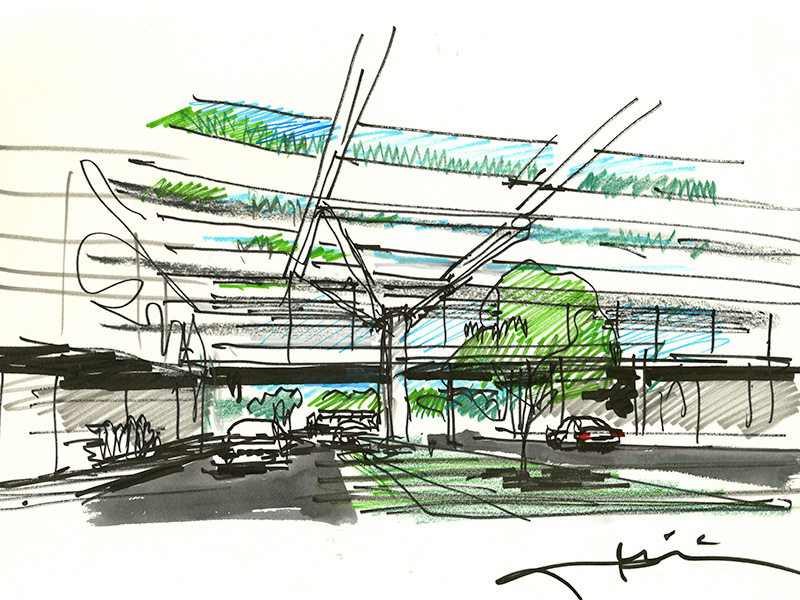
(Image Credit: Rafael Viñoly Architects)
Imagine stepping off a plane and into a new country where rows of grapevine stretch across the roof of the airport. The 19-acre vineyard, a symbol of Italy’s rich traditions and forward-thinking ethos, will not only adorn the terminal but also play a pivotal role in its sustainability mission. A leading vintner from the area will cultivate the vineyards, and the wine is set to be crafted and aged in specialized cellars below the terminal’s roof. The new 538,195 rectangular-foot terminal is expected to greet over 5.9 million international passengers annually. The airport in the northwest outskirts of Florence will also be linked to the city and the rest of the region with multi-modal transport options like a new light rail device that creates a quick and sustainable way for fliers to get around. One of the project’s major features is reorienting the existing airport runway 90 degrees away from the nearby hills which limits the ability of many modern aircraft to operate and to lengthen the inadequately short runway.
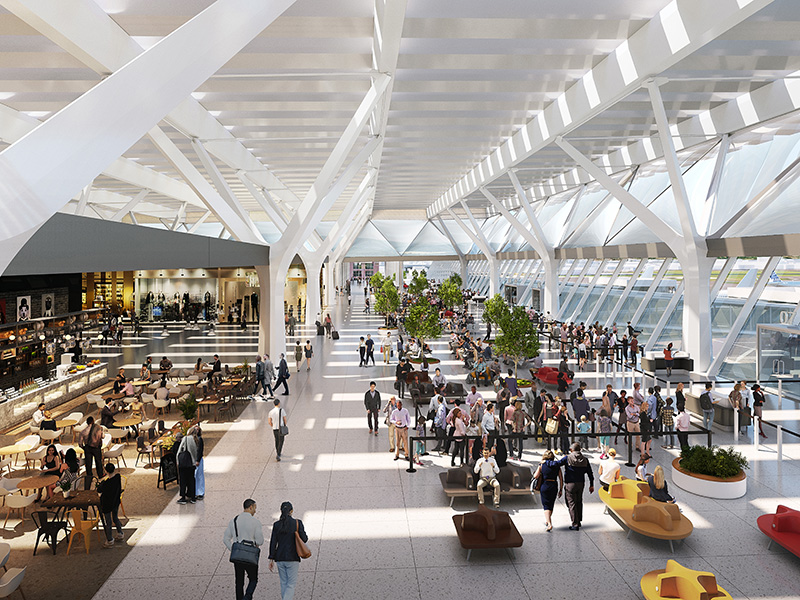
While the logistics of the second busiest Tuscan airport, in terms of the number of passengers after Pisa International Airport, would be improved for aircraft, the architectural firm also focused on improving their passenger experience. The current structure of the airport has little to no facilities like Italy’s large airports in Rome, Milan, and Venice for passengers arriving.
The airports in the former cities are much larger and busier, offering a wide range of facilities including numerous shops, restaurants, cafes, lounges catering to various airlines and alliances, duty-free stores, currency exchange services, ATMs, and car rental agencies. Florence Airport has fewer facilities due to its smaller size, primarily serving domestic and regional flights, though it does have some international connections.
By placing the ‘Arrivals’ and ‘Departures’ facing each other across a large public space with a ‘Piazza’ at the centre of the new terminal, circulation into and out of the terminal will be streamlined, while also providing access to mass transit, parking and retail that serve the local community as well as travellers.
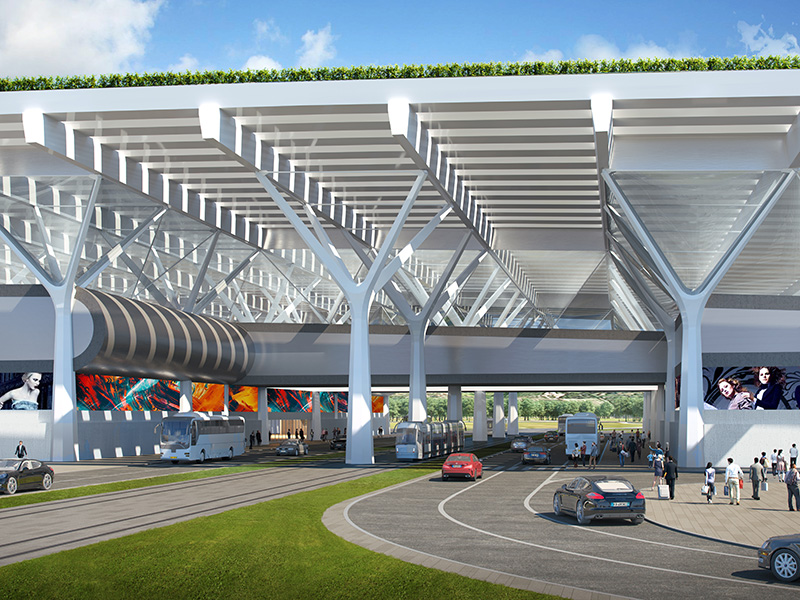
Visitors who frequently tour Europe, or those with long travel times, are sure to revel in crafted and aged wine at the airport. However, does the inclusion of a vineyard contribute to the new terminal’s sustainability vision? For aviation, there are two clear priorities – the shift to sustainable aviation fuels–a transition that’s a work in progress, and second, the need to develop sustainable airports. Now the new airport can check off at least one of these boxes. The new terminal is designed to decrease the carbon footprint in the operation and maximise the usage of self-produced energy. The project is targeting a LEED Platinum sustainability rating and will comply with EU policy and Italian legislation. A worldwide recognised indicator of sustainability accomplishment, LEED certification offers a framework for the construction of cost-effective, hygienic, and green buildings which offer environmental, social, and governance benefits.
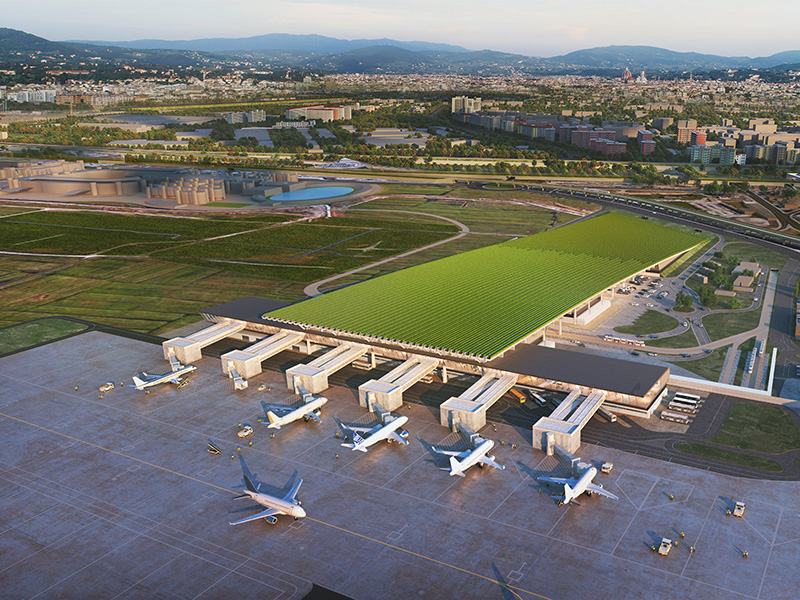
In a nutshell, an airport is a complex system of buildings, services, vehicles, and auxiliary systems that require a lot of resources and energy to operate. The Florence terminal will require a massive amount of work to optimise sustainable energy sources. The architectural firm plans to include rainwater harvesting systems built into the structural components that house the vineyard, and the reutilization of purified wastewater to reduce the building’s need for potable water.
Another factor to consider is how the grapevines, next to the runway will be protected from the harm caused by aircraft fumes. The architecture firm’s press statement addressed the implications of the multimillion-dollar investment. The roof of the Florence Airport building will be planted with non-fruit-bearing vines, while fruit-bearing varieties will be planted on the berm that marks the roof’s eastern origin and the land to the east of it. Located where the building’s layout and the prevailing winds keep pollutants away from the plants, the fruit-bearing vines will be at least 400 metres from the closest fuel store or aircraft.
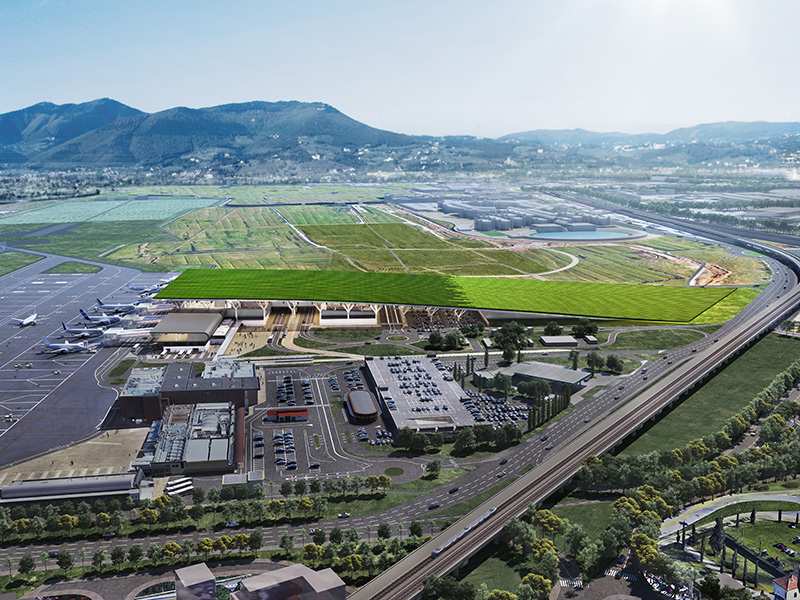
This ambitious project, which will be finished in two stages—phase one in 2026 and phase two in 2035—embodies Florence’s commitment to a sustainable future while commemorating its illustrious past. Every feature of the terminal, from cutting-edge rainwater collection systems to energy-efficient architectural components, has been painstakingly designed to reduce environmental impact without sacrificing elegance. As the world looks to redefine air travel in the face of climate change, Aeroporto Amerigo Vespucci stands as a beacon of possibility—a place where wine meets wings, and sustainability takes flight.



